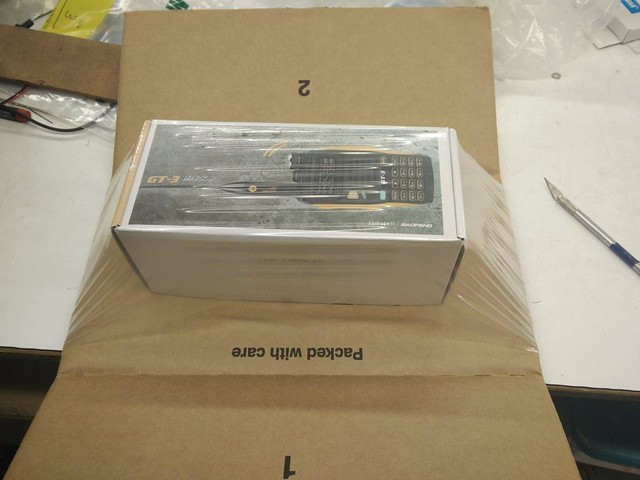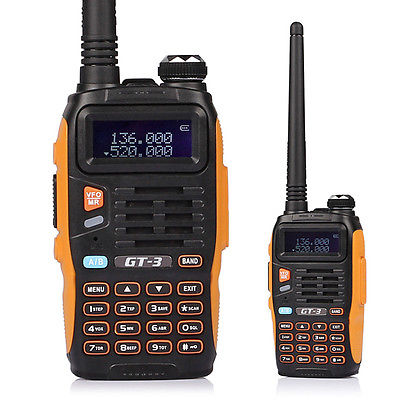Hey folks,
After some mixed thoughts with the Baofeng BF-F8HP, I ordered the GT-3 Mk. II to compare the two transceivers.
The GT-3 Mk. II is a successor of the GT-3 with some minor improvements, most notably the stock antenna.
The package arrived wrapped to an inner piece of cardboard. Interesting package design that doesn’t require any packaged air.

Once again, the Amazon box had li-ion warning labels, which was a nice safety measure.
The aesthetics is the most notable difference between the BF-F8HP, which sports an all-black theme, while the GT-3 has yellow-orange sides with a keypad contoured with the same color. The UV-5R also has an all-black design with the exception of a glossy metallic speaker grill.
The colorful looks of the GT-3 makes it look less industrial than the F8HP, and gives it a slight tinge of playfulness, just like a yellow Ferrari. The GT-3 might be appealing to teenagers and younger members who want to get their hands on HAM radios.
Another noticeable difference is the display. It uses an inverted display, where the text is white and the background is dark purple. It looks better on the ads than in real life:

In reality, it’s quite hard to see when the back light is off. When it’s on, it looks very cool and uniquely different from the usual LCD displays:
Dark ambient light:

Bright ambient light:

However, the contrast becomes quite poor when the back light turns off (1-10s configurable timeout), and the characters that are supposed to be white aren’t very reflective without the back light.
Dark ambient light:

Bright ambient light:

I found the GT-3 Mk. II quite hard to read when walking in the dark. When I pressed a key or received an incoming transmission, the back light would turn on and it would be great, but otherwise it bothered me.
One nice improvement was the rubberized volume and power dial. It provided great grip and I can able to turn the radio on effortlessly compared to the F8HP and the UV-5R.

Comparison of antennas. GT-3 Mk. II, BF-F8HP, and the UV-5R.

The antenna is supposedly a re-branded Nagoya NA-666 also known as the “Antenna from Hell.” Despite its nickname, it’s performance is quite respectable, although I haven’t tested it thoroughly myself. I found it to wobble around too much while I had the GT-3 clipped to my pants. Might cause unwanted attention, maybe not.
Pros:
-Identical responsiveness to the F8HP.
-Has a physical Band Select button, although the Band Select menu item doesn’t work as in the F8HP.
-Decent stock antenna
-Rubberized volume/power dial
Cons:
-Low contrast inverted display, hard to read when backlight is off.
-Display dims whenever receiving or transmitting a signal.
-Floppy antenna
It’s a very tough choice between the GT-3 Mk. II and the F8HP. I’ll have to return one of them, but I’ve still yet to decide. Thanks for reading the brief review.



